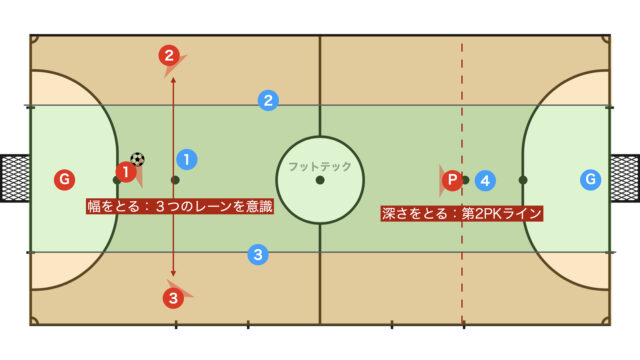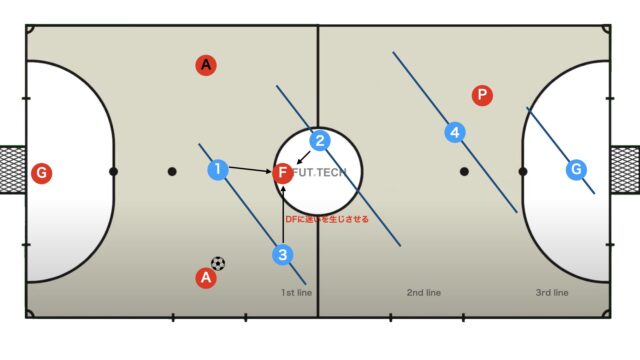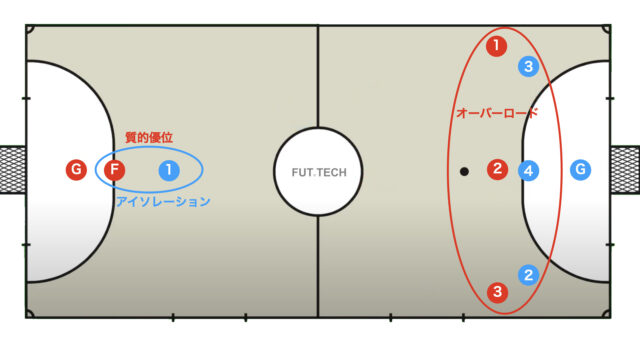When you hear “2-2 positional attack,” what do you imagine?
In the 2-2 (box) formation, there are two tactical systems: one featuring two fixos and two alas, commonly referred to as “quatro,” and another featuring two fixos and two pivos.
This article provides an in-depth explanation of the box formation tactic that deploys two pivos in the front line.
- Overview of the Box Formation (Initial Setup, Tactical Intent)
- Process: Possession
- Pivo (Attack) and Fixo (Defense) Battle
- Process: Advancing and Breaking Down After a Vertical Pass to the Pivo
- Process: Advancing and Breaking Down After a Diagonal Pass to the Pivo
- Formation Change
- When the Press is Working → Use the Goalkeeper
- Summary
Overview of the Box Formation (Initial Setup, Tactical Intent)
Initial Setup: Who is placed where?
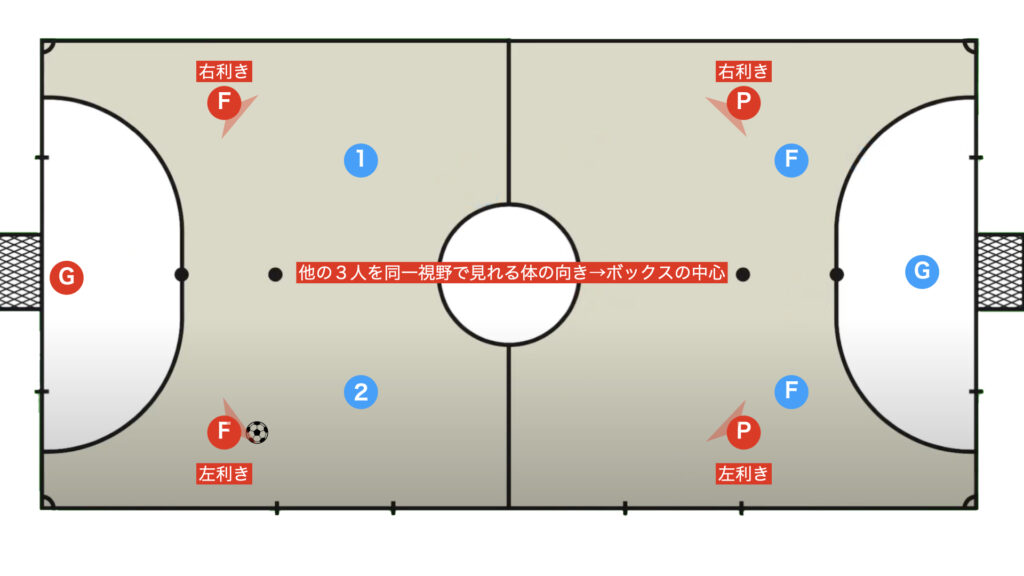
- Place the pivos at the front and the fixos (alas) at the back
- Position them on the side opposite their dominant foot (right-footed on the left, left-footed on the right)
- Orient all three players so they share the same field of vision – that is, they look toward the center of the box
Tactical Intent 1: Creating Space Between the Lines
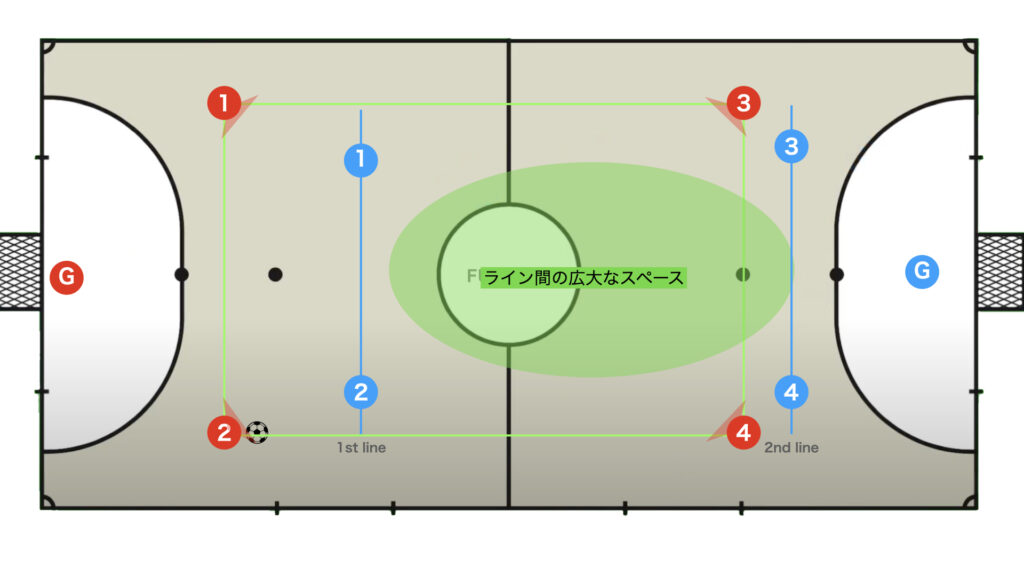
Basically, most teams respond to this formation with man-to-man marking, resulting in two defensive lines (or three lines if you include the goalkeeper) as shown in the diagram above.
The key of this tactic is to effectively utilize the space that emerges between these lines (at the center of the box).
Tactical Intent 2: Creating a Qualitative Advantage Through Isolation of Individuals
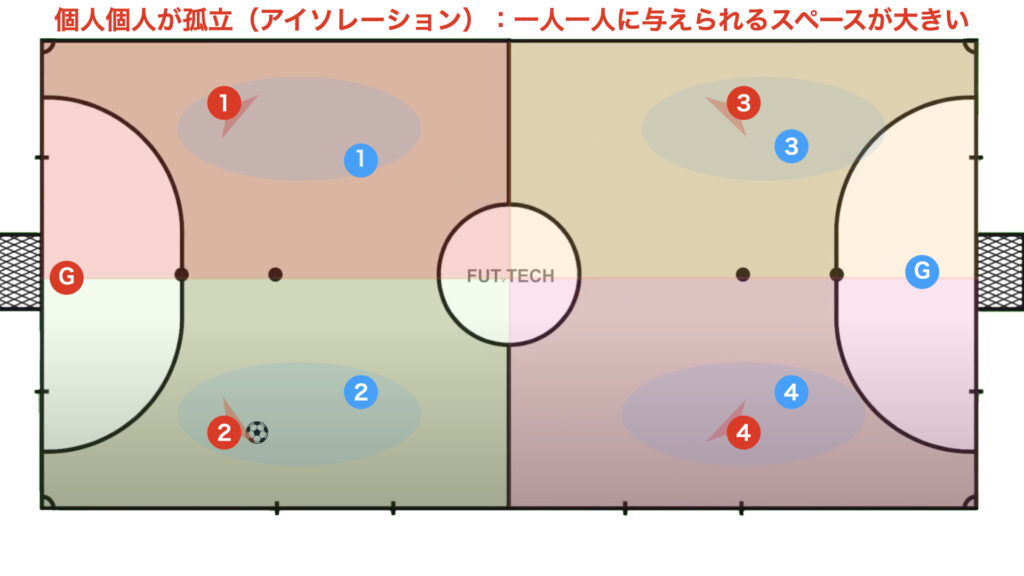
As shown in the diagram above, this formation is characterized by wider spacing between players, giving each individual more room.
This approach tends to rely entirely on individual ability, making it ideal for teams with a strong soccer background.
On a small court (ex. 30m×15m), the spacing between players is just right; therefore, if a team is struggling with 4-0 or 3-1 formations on a compact court, this tactic is worth considering.
Always Aim for the Pivo
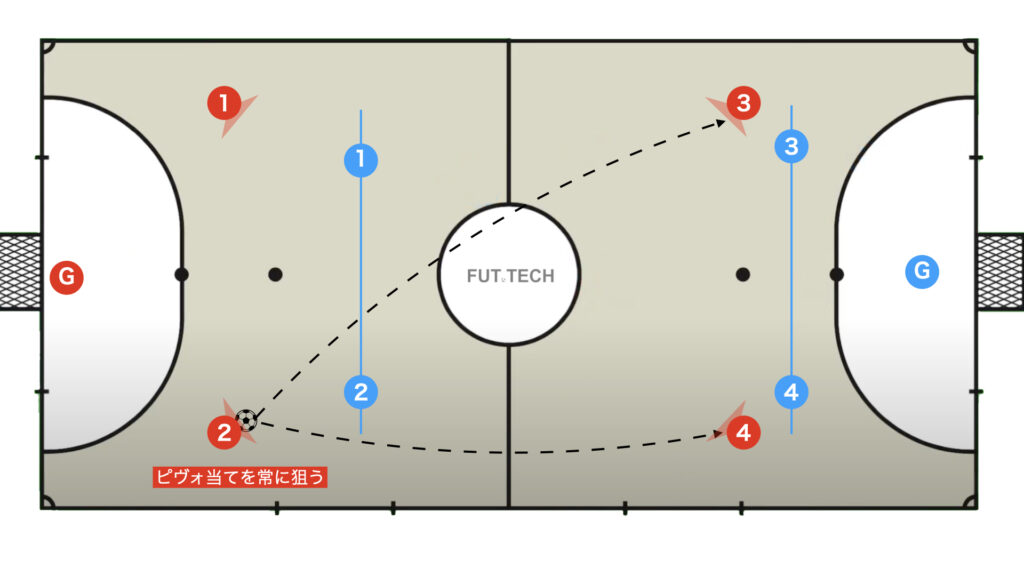
Because two pivos are deployed, the key of this tactic is the creation of both vertical and diagonal passing lanes to the pivo.
It is crucial for the players at the back to constantly lift their heads and be aware of the passing lanes to the pivo.
- Pass to the pivo
- Lateral pass
- Back pass to the goalkeeper (if available)
Process: Possession
When a Pass to the Pivo Isn’t Available → Lateral Pass
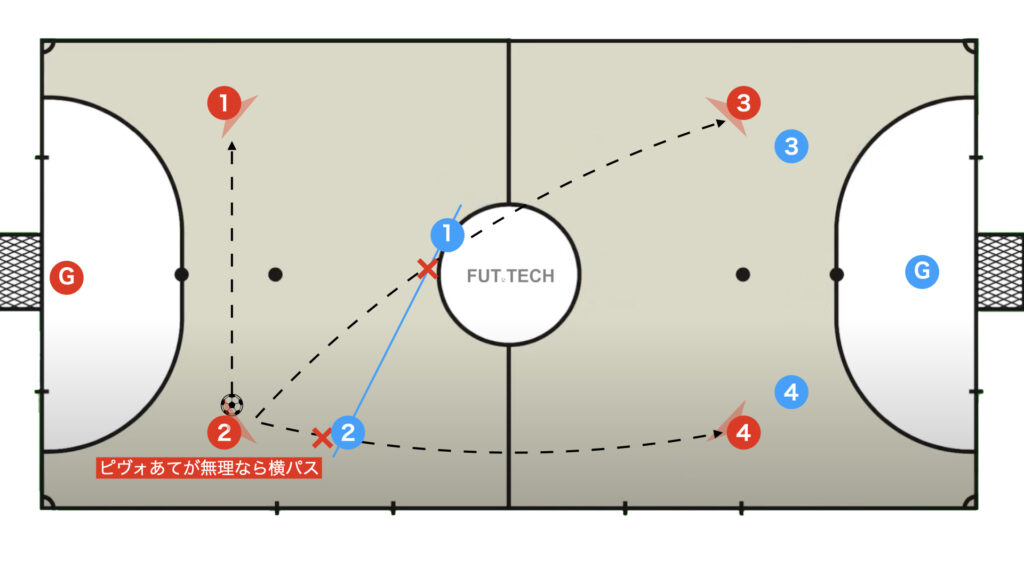
If neither the vertical nor the diagonal passing lanes to the pivo are available, use a lateral pass to shift the opposing defenders.
If the 1st defender in the front line is not pressing the ball holder, the 2nd defender should monitor the diagonal passing lane to the pivo (cutting off one-touch or diagonal passes).
Aim for a Direct Approach
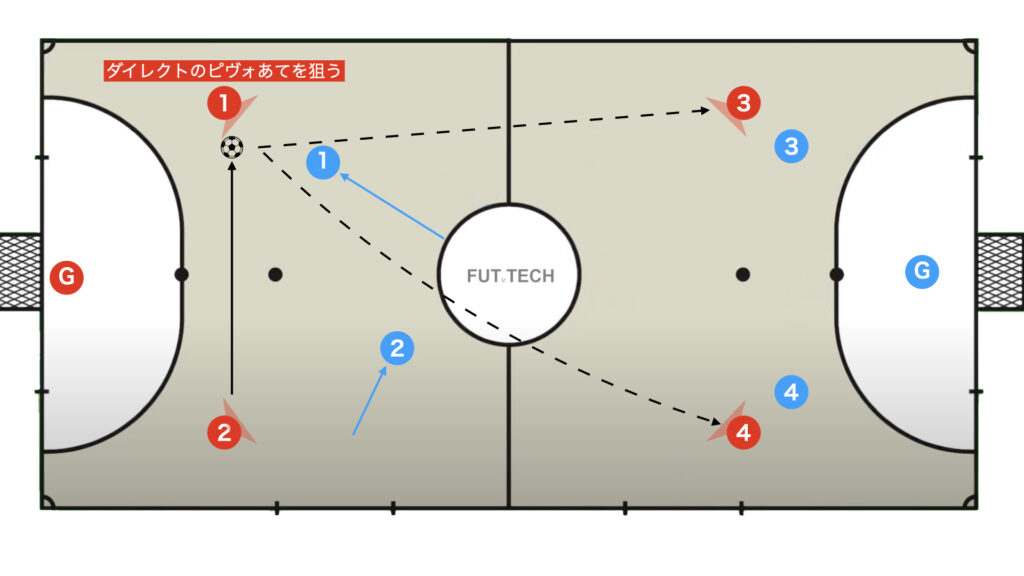
Rather than trapping a lateral pass and then searching for a passing lane, assess the situation before receiving the ball and aim directly for a pass to the pivo.
Moving Closer to the Ball to Temporarily Pull Off the Opponent
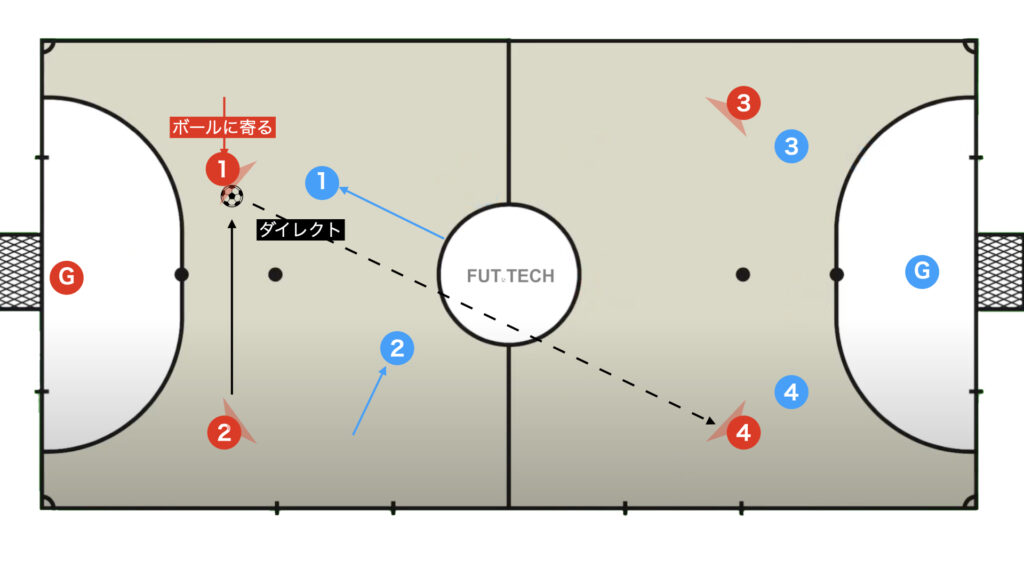
If the opponent is pressing, moving closer to the ball or attacking it to intercept can effectively pull the opponent away temporarily.
When the Opponent Clings to the Inside
Contrapie
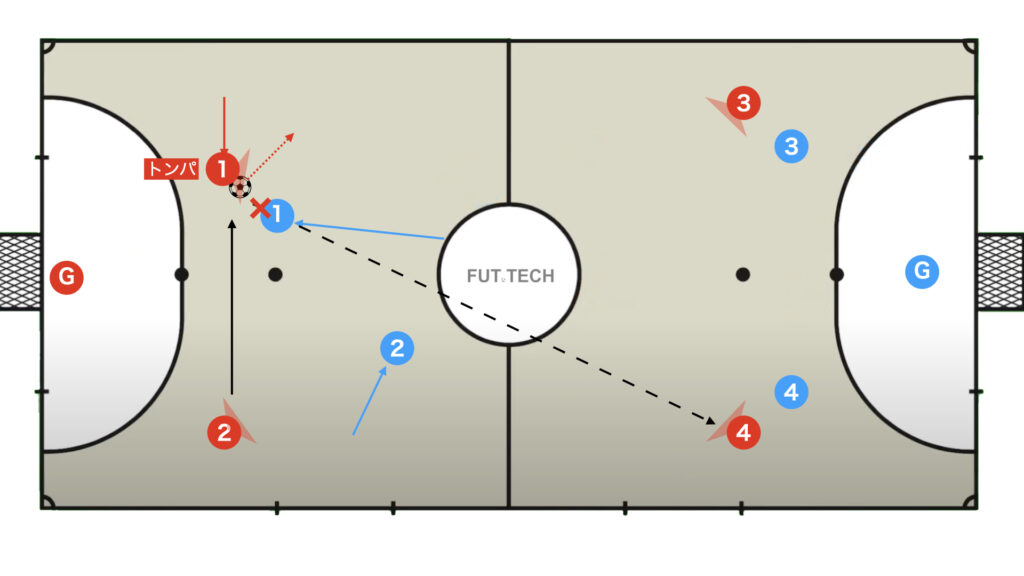
Sometimes, the opposing defender, anticipating that a player will move closer to the ball, will press slightly inward.
If the opponent clings to the inside, take advantage of it by dribbling to the opposite side to shake off the opposing defender.
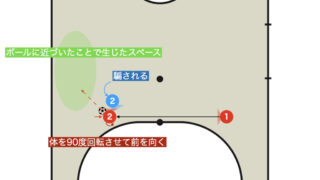
Pass to the Pivo or Dribble
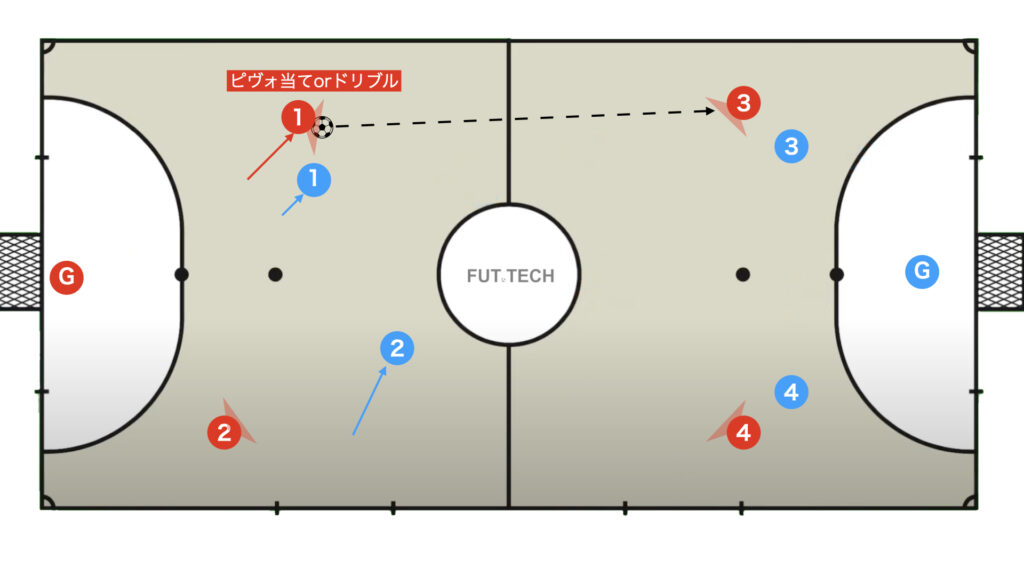
After executing a contrapie, ideally you would dribble forward to create a 3 vs 2 in the attacking third. However, if the opposing defender (Blue No.1) manages to press quickly, it is safer to promptly pass to the pivo.
Pivo (Attack) and Fixo (Defense) Battle
Defense: Fixo Positions Himself in Front of the Pivo
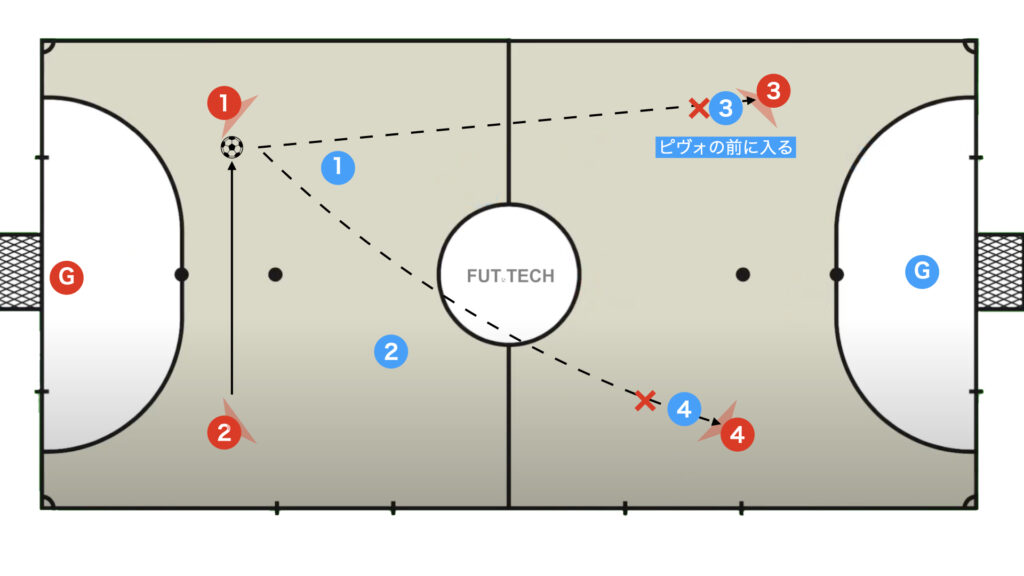
As a defensive measure against the pivo, it is fundamental for the fixo to position himself in front of the pivo to disrupt the passing lane.
Countermeasure When Overrun: Pivo Rotation and Indirect Blocking
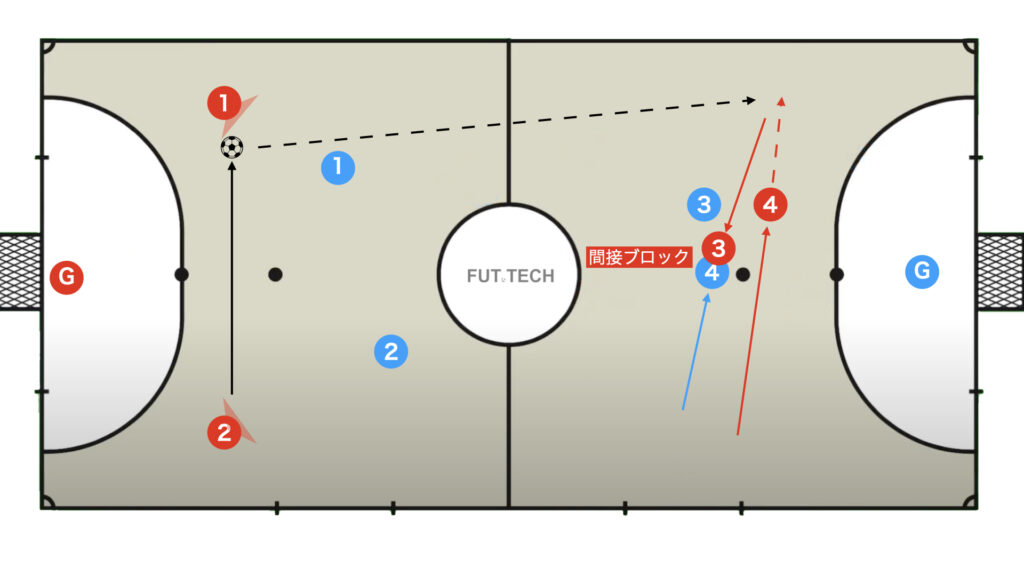
When the opposing fixo advances and cuts off the passing lane to the pivo, it is effective for the two pivos to change positions.
This causes confusion in the opponents’ marking, enabling a free pass reception.
Conversely, it is also very effective for the runner to indirectly block the marker of the pivo (Red No.4), thereby enabling a free shot.
Process: Advancing and Breaking Down After a Vertical Pass to the Pivo
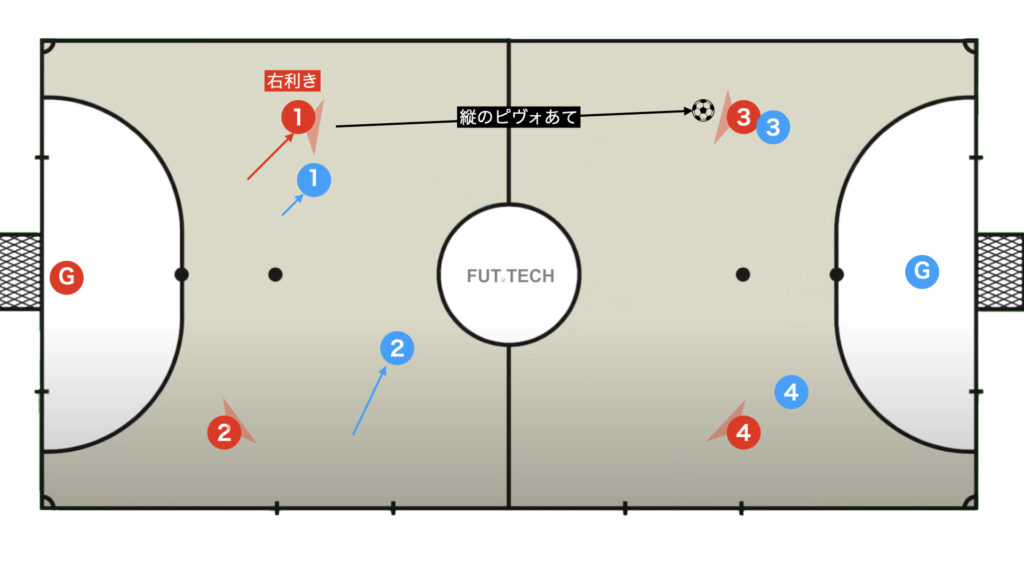
This section explains the series of processes involved from a vertical pass to the pivo, to the subsequent involvement and finish.
The Player Who Receives the Pass to the Pivo Makes a Diagonal Run
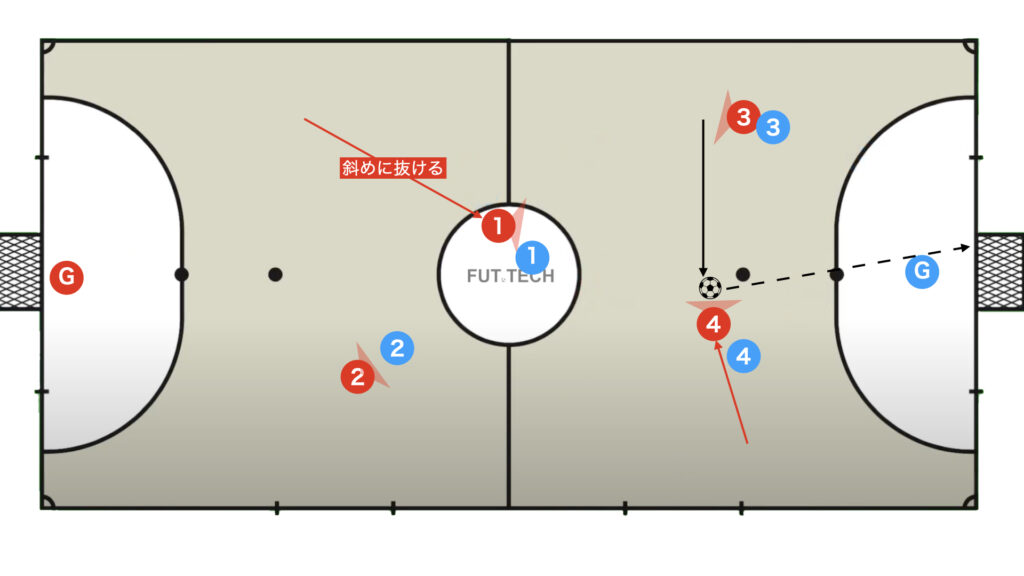
As shown in the diagram above, after a pass to the pivo, always keep the option of finishing by simply using the other pivo (with a two-touch under).
Since the basic principle is that the two players closest to the ball become involved after a vertical pass to the pivo, the player who received the pass should make a diagonal run.
This concept is based on the same theory as the three-player tactic using the pivo, known as “L”.
LIn other words, the attack is completed by the diagonal runner and the two pivos.
Indirectly Blocking a Teammate to Create Space → Establishing a Numerical Advantage

In the diagram above, the pivo indirectly blocks the marking of Red No.1, who made a diagonal run after the pass, aiming for a diagonal pass.
This creates confusion in the opponent’s marking, allowing for a free reception of the ball.
Conversely, it is also very effective for the runner to indirectly block the marker of the pivo (Red No.4), thereby enabling a free shot.
When a Simple Finish is Not Possible: The Duo of the Pivo and the Fixo + Segundo

Rotation
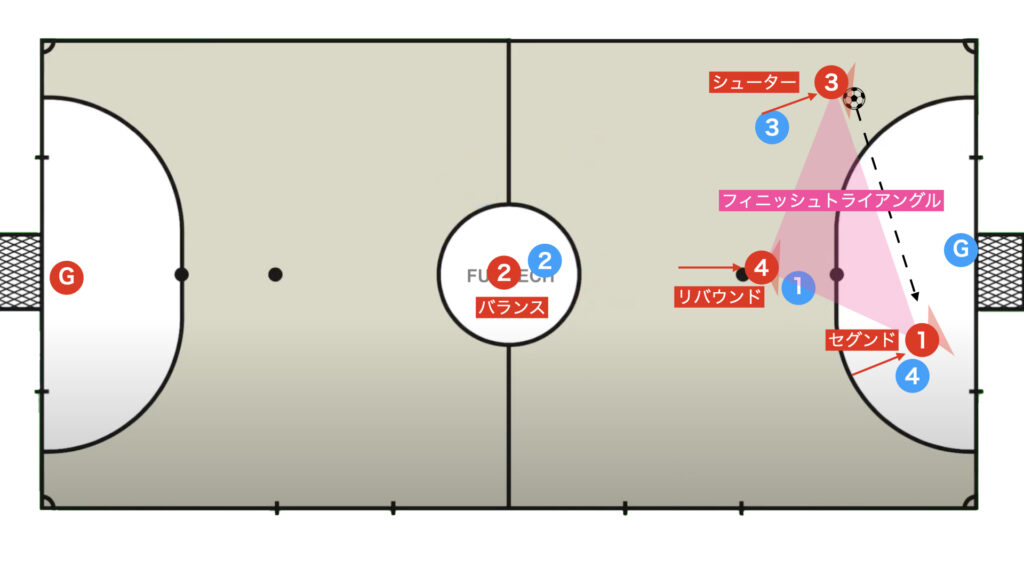
A pivo should not only rely on his teammates but also always have the option to rotate, engaging in tactical maneuvering.
When rotating, form a finishing triangle; if a vertical rotation does not yield a good angle on goal, simply aim for the segundo.
Pass Exchange with the Pivo
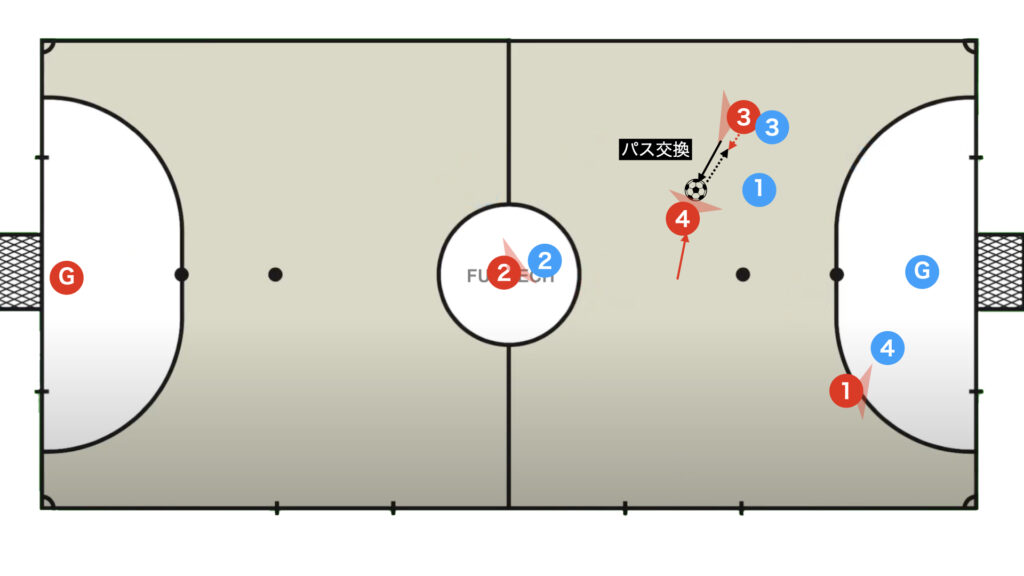
It is a tricky play, but if you switch positions as if exchanging passes with the sole, the opposing defenders will be confused.
- Pass with the sole from Red No.3 to Red No.4
- Red No.4 uses a shot feint to pass with the sole to Red No.3 and then overlaps Red No.3
- Red No.4 either rotates inward or performs a pisada (using the overlapping Red No.4)
Supporting the Pivo’s Rotation with a Block
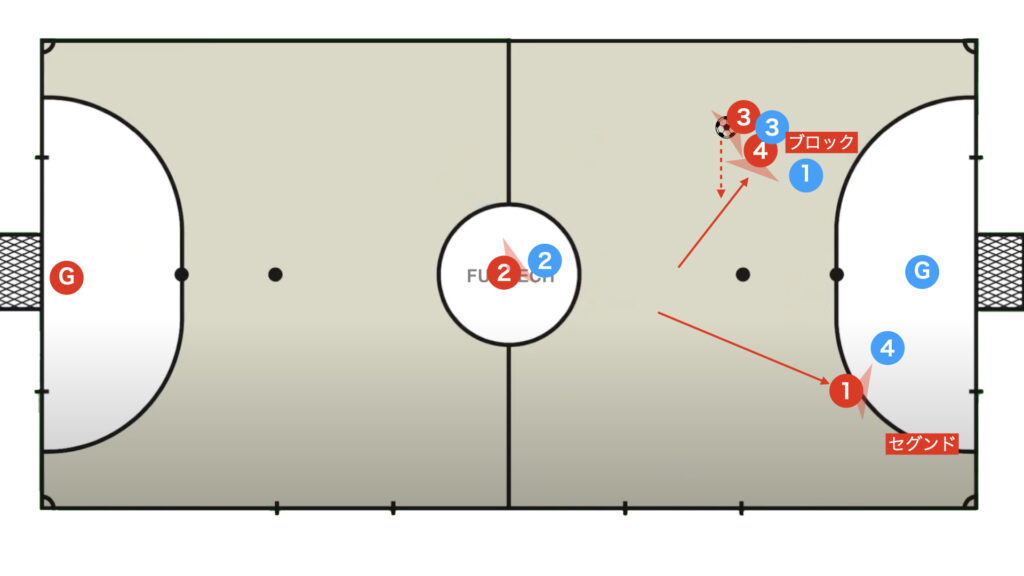
By blocking the pivo’s marker from the side, you can support the pivo’s rotation.
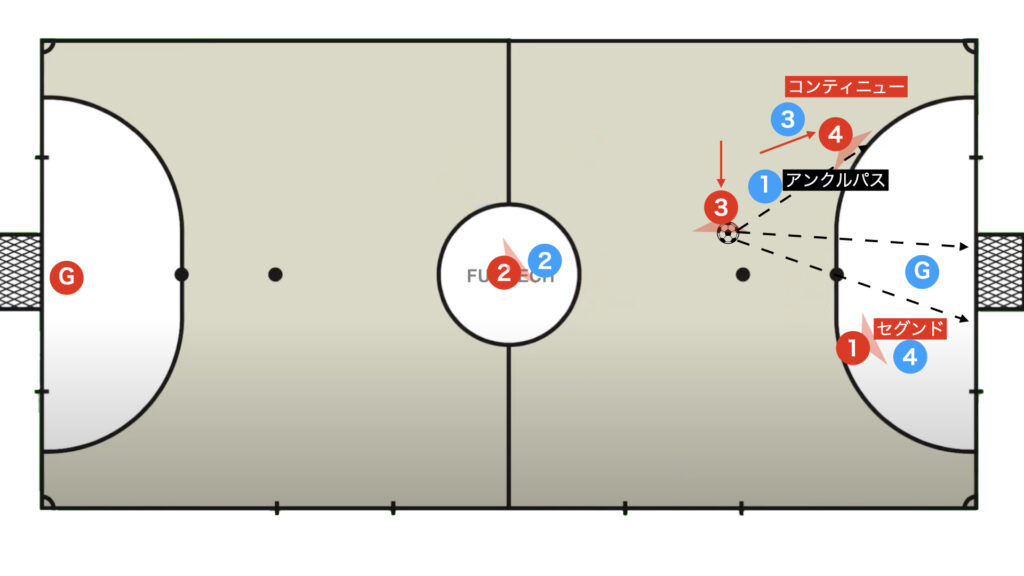
The Red No.4 who executed the block continues by receiving another pass and preparing for a loose ball.
Supplement: Patterns Involving Diagonal Players
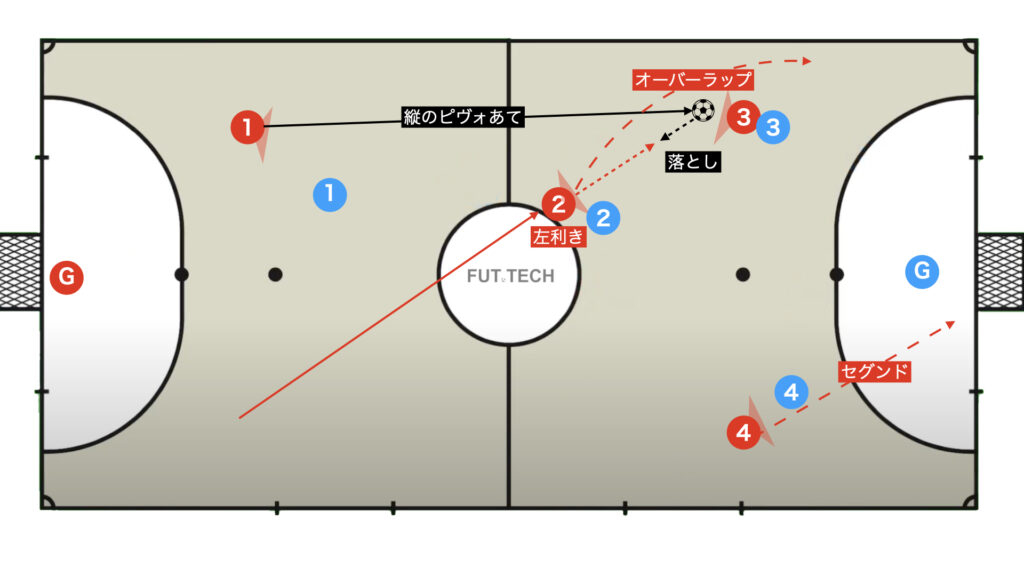
For the sake of brevity, detailed explanation is omitted, but there are also patterns where players far from the ball become involved with the pivo.
Although this approach has the drawback of taking more time to finish, in some cases it might be superior in terms of dominant foot or other factors, so it is advisable for teams to decide on this tactic in advance.
Process: Advancing and Breaking Down After a Diagonal Pass to the Pivo

Patterns Involving Diagonal (Pivo-Passed) Players

Patterns Involving Players Close to the Ball (Not Receiving a Pass to the Pivo)
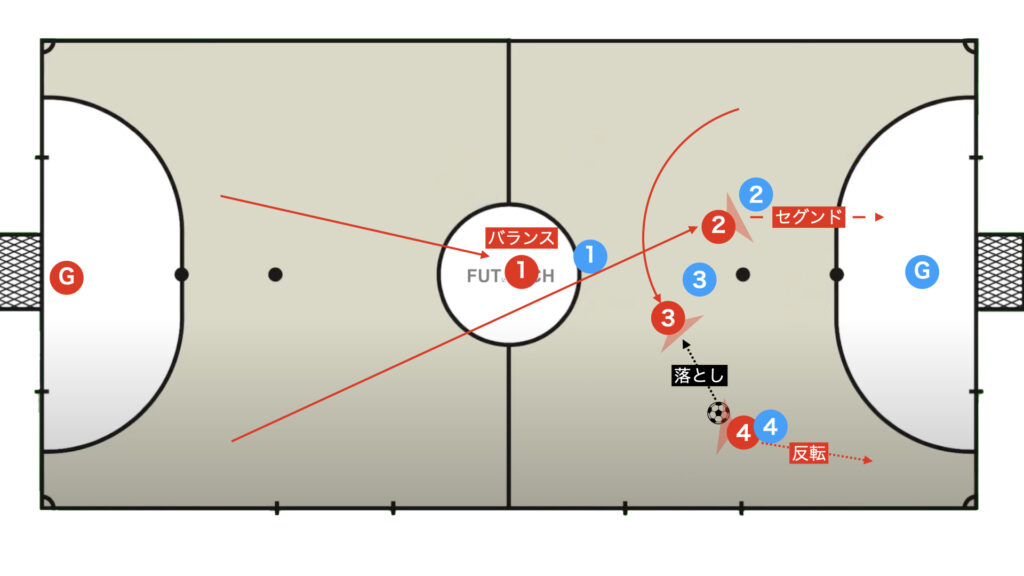
The pattern where the fixo (Red No.2), who is close to the ball, makes a diagonal run overlaps with the attacking pattern explained in the vertical pass to the pivo, so detailed explanation is omitted.
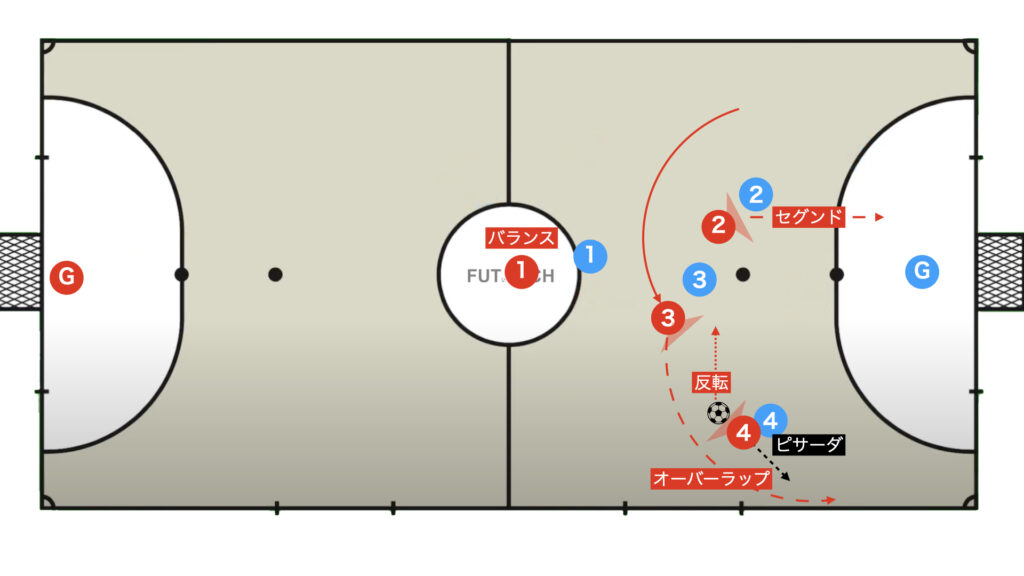
Formation Change
3-1 → 2-2
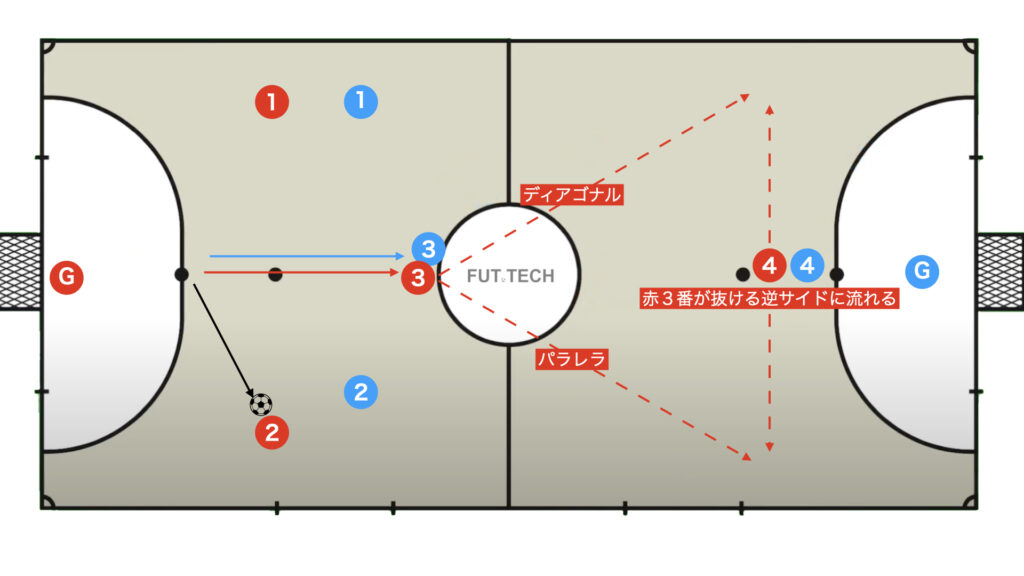
In a 3-1 formation, if the rear player makes a run to the side opposite the pivo, the formation shifts to 2-2.
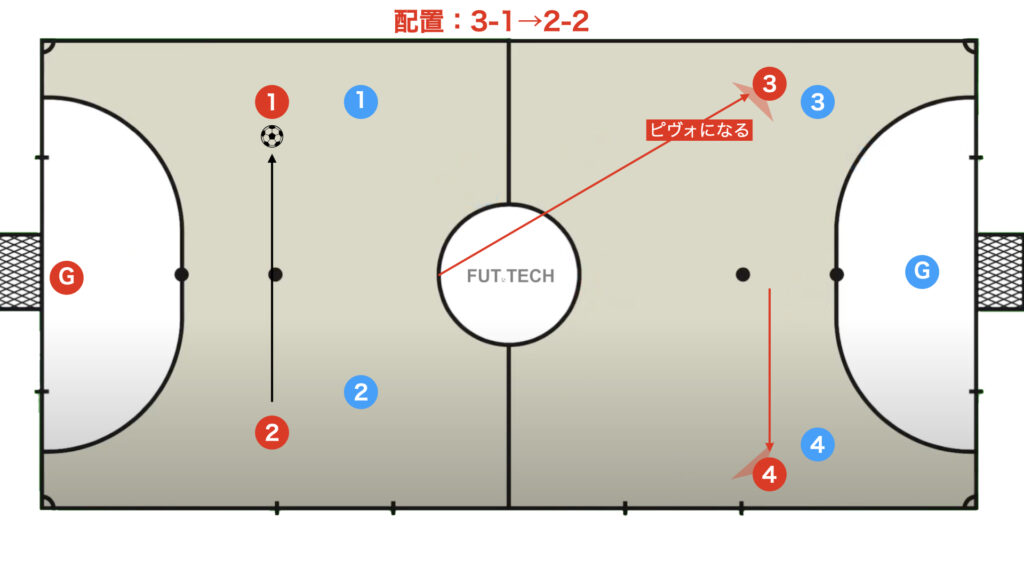
Additionally, if the player making the run becomes a pivo (pivot), the system can transform into the exact same 2-2 formation described in this article.
Conversely, if one of the two front players falls back into the first line, the formation can revert to 3-1.
2-2 → 2-1-1
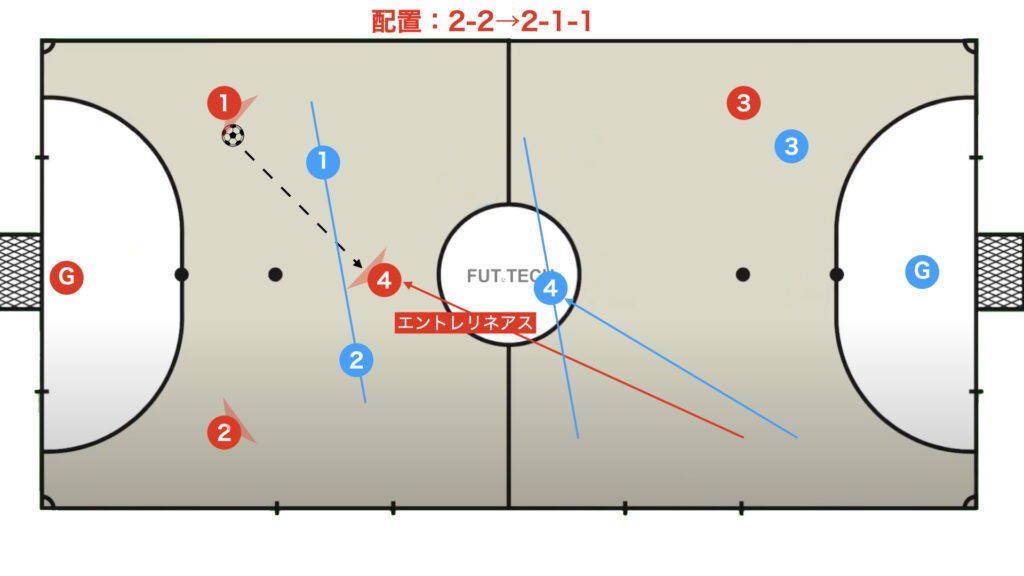
If a pass to the pivo is not executed well, or if the pivo cannot be properly settled in the front line, the formation can shift to 2-1-1 as the space between the lines opens up.
2-2 → 1-1-2

A formation of 1-1-2 can be created when a fixo without the ball moves up (makes a run) to the second line.
This 1-1-2 formation might not be very familiar, but there are quite a few teams that use it unconsciously.
The advantage of this formation is that it allows finishing in a short time and with minimal effort after a pass to the pivo.
When the Press is Working → Use the Goalkeeper
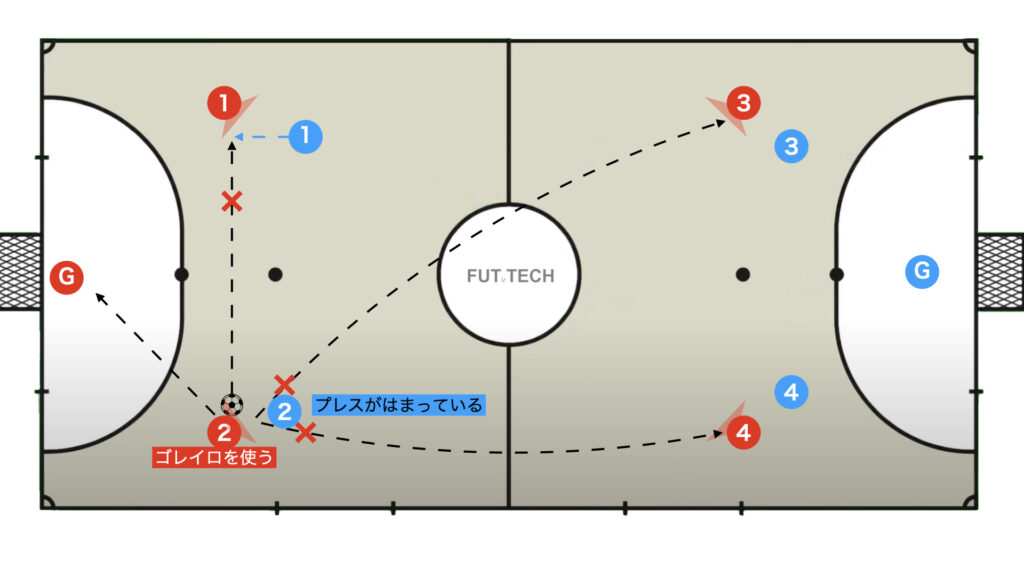
When the opponent’s press is applied as shown in the diagram above, it is wise to decisively use the goalkeeper (if a back pass isn’t available, it’s safer to clear the ball to safety).
If the 1st defender (Blue No.2) is pressing the ball and both passing lanes to the pivo are cut off, Blue No.1 should not mark the pivo’s lane but instead monitor the remaining passing lane (the lateral pass lane to Red No.1).
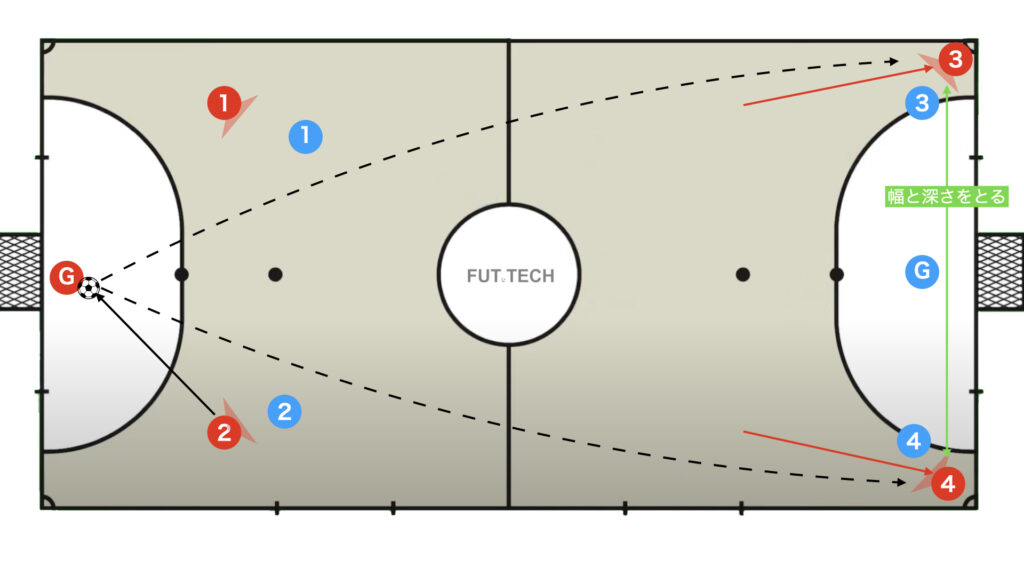
Both pivos in the front line should take up width and depth.

- The goalkeeper should kick a low-driven ball aimed at one of the pivos’ headers
- The diagonal player (fixo) moves into the rebound position (taking into account the dominant foot and body orientation)
- The other fixo takes up a balanced (cover) position
- The pivo heads back into the rebound position (being careful not to interfere with the goalkeeper)
Summary
What did you think?
This tactic is simple and easy to understand as a system, but it does require a certain level of individual skill.
Therefore, it is a tactic that can be very effective for ad hoc teams, especially those with many members who have a background in soccer.
Moreover, considering that teams can inadvertently shift into this formation through a run by one player in a 3-1 formation or two players in a 4-0 formation, organizing this setup once might deepen your understanding of positional attack.
Once you try it boldly with your team, you’ll find it interesting – so be sure to give it a try!
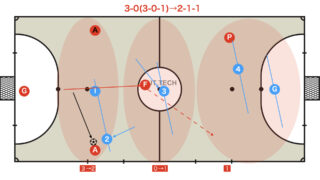
Thank you very much for reading this article to the end.
If you found this article useful, please consider sharing it using the social media share buttons above.
We regularly share valuable insights on futsal tactics on Twitter, so if you haven’t followed us yet, we’d appreciate your support!
We are committed to raising the level of futsal in Japan by sharing high-quality information through discussions with individuals who have coaching experience in the F.League and overseas.
If you have any questions or notice any mistakes, feel free to leave a comment below.
We update our articles regularly, so if you’d like to keep reading, please bookmark our site or search for “FutTech”!
